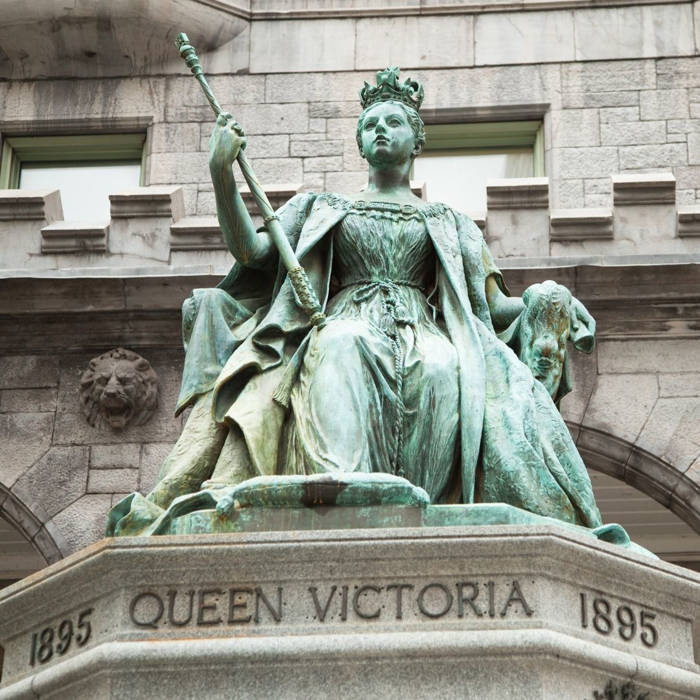
The Victorian Era, named after Queen Victoria, who reigned from 1837 to 1901, was one of the most transformative periods in British history. It was a time of rapid change—socially, politically, economically, and technologically. Under Queen Victoria's rule, the United Kingdom became the world’s most powerful empire, and the era left a lasting legacy that still shapes the modern world today. 🌍
In this article, we'll explore:
- Who was Queen Victoria?
- What defined the Victorian Era?
- Key social, political, and technological changes
- The British Empire and colonial expansion
- Cultural and scientific advancements
- The Victorian legacy
Let’s dive into one of the most fascinating periods in history. 📚
👑 Who Was Queen Victoria?
Queen Victoria was born Alexandrina Victoria on May 24, 1819, at Kensington Palace, London. She became queen at just 18 years old, following the death of her uncle, King William IV. Her reign lasted 63 years and seven months, making her the longest-reigning monarch in British history at the time—a record only surpassed by Queen Elizabeth II in 2015.
Victoria married her cousin, Prince Albert of Saxe-Coburg and Gotha, in 1840. Their marriage was a true partnership, and Albert played a major role in the cultural and scientific direction of the nation. They had nine children, many of whom married into royal families across Europe, earning her the nickname “the grandmother of Europe.”
🕰 What Was the Victorian Era?
The Victorian Era refers to the period between 1837 and 1901, during Queen Victoria’s reign. It was a time of extraordinary development:
- The Industrial Revolution peaked
- The British Empire expanded rapidly
- Scientific discoveries transformed daily life
- Social reforms improved living and working conditions
- Art, literature, and architecture flourished
But it was also an era of contrasts: enormous wealth alongside deep poverty, strict moral codes versus hidden vices, and rapid progress shadowed by growing social challenges.
🏭 The Industrial Revolution and Economic Growth
One of the most defining features of the Victorian Era was the Industrial Revolution. Britain became known as “the workshop of the world.” 🚂
Key Developments:
- Steam engines powered trains and ships
- Factories mass-produced textiles, steel, and machinery
- Urbanization drew millions into rapidly growing cities
- Railways expanded across the country, revolutionizing travel
This economic boom created vast wealth for the upper and middle classes, but also harsh conditions for workers, especially women and children. Poor housing, long working hours, and low wages were common.
📜 Social Reforms and Changing Values
The Industrial Age brought attention to social injustices, leading to major reforms throughout the Victorian period.
Important Reforms:
- The Factory Acts regulated working hours and child labor
- The Public Health Acts aimed to improve sanitation
- The Education Act of 1870 made elementary education compulsory
- The Poor Law reforms restructured assistance to the needy
Meanwhile, the Victorians valued duty, respectability, thrift, and morality. The idea of the “ideal family”, with a clear division of gender roles, became deeply embedded in society.
Yet, underneath the surface, there was also rising awareness of issues like gender inequality, poverty, and class division—sparking early feminist and labor movements.
🌍 The British Empire: Expansion and Power
Under Victoria’s reign, the British Empire reached its height, covering nearly a quarter of the world’s land and population. 🇬🇧
Major Colonies and Territories:
- India (crowned Victoria as Empress of India in 1876)
- Large parts of Africa, including Egypt and South Africa
- Canada, Australia, and New Zealand
- Numerous islands and trading posts across Asia and the Caribbean
This expansion brought wealth and global influence, but also conflict, exploitation, and resistance. Colonial rule often imposed British systems and suppressed local cultures. Still, the Empire played a huge role in spreading English language, legal systems, and industrial practices.
💡 Science, Innovation, and the Arts
The Victorian period saw breathtaking scientific and cultural advancement. It was a golden age for invention, discovery, and creativity. 💡🎨
Science and Medicine:
- Charles Darwin published On the Origin of Species (1859), revolutionizing biology
- Florence Nightingale pioneered modern nursing
- Joseph Lister introduced antiseptic surgery
- Public health initiatives improved life expectancy
Technology:
- The telegraph transformed communication
- Photography captured real life like never before
- Electricity began to power homes and streets
Arts and Literature:
- Charles Dickens, the Brontë sisters, Thomas Hardy, and Oscar Wilde wrote works that still resonate
- Victorian architecture, with its ornate style, reshaped cities
- The Great Exhibition of 1851 showcased Britain’s industrial might
Culture flourished, reflecting both the optimism and anxieties of a rapidly changing world.
👩👧👦 Women and Family in Victorian Society
Victorian ideals emphasized a clear gender divide: men in public life and women in the domestic sphere. But real life was more complicated.
The "Angel in the House":
Women were expected to be pure, obedient, and nurturing, focusing on motherhood and managing the home. This idealized role often limited their opportunities.
But Women Were Also:
- Factory workers and nurses
- Writers like Elizabeth Gaskell and George Eliot
- Activists like Millicent Fawcett and Josephine Butler
The seeds of women’s rights were planted during this time, leading to suffrage campaigns in the early 20th century.
⚖️ Politics and Governance
The Victorian Era saw major political shifts toward democracy and reform:
Key Developments:
- The Reform Acts (1832, 1867, 1884) gradually extended voting rights
- Political parties like the Liberals and Conservatives gained strength
- Prime Ministers like Benjamin Disraeli and William Gladstone played crucial roles in shaping policy
Victoria herself had complex relationships with her ministers. Though constitutionally limited, she influenced politics through personal alliances and opinions.
🏛 Legacy of the Victorian Era
Queen Victoria died on January 22, 1901, ending an era that had reshaped the world.
Lasting Impacts:
- A modern Britain with democratic institutions
- Foundations for the welfare state
- Advances in science, technology, and medicine
- A rich legacy of literature, art, and architecture
- Global connections—some positive, others controversial—through the British Empire
The Victorian Era still influences how we think about progress, innovation, and social responsibility.
🧠 Conclusion: Why the Victorian Era Still Matters
The reign of Queen Victoria was not just a royal tenure—it was a defining chapter in global history. Her era was marked by change, challenge, and creativity.
Whether we look at the railways we travel, the books we read, or the values we question, we are still living with the echoes of the Victorian age.
Understanding this period helps us better appreciate the complexity of the modern world. 🌐
Queen Victoria and her era remind us that change is constant—and that with courage, vision, and humanity, societies can adapt and grow. 💫
Sources:
- BBC History
- The British Library
- Victoria & Albert Museum
- National Archives (UK)
- “Victorians: Britain Through the Age” by A.N. Wilson
- Encyclopaedia Britannica

